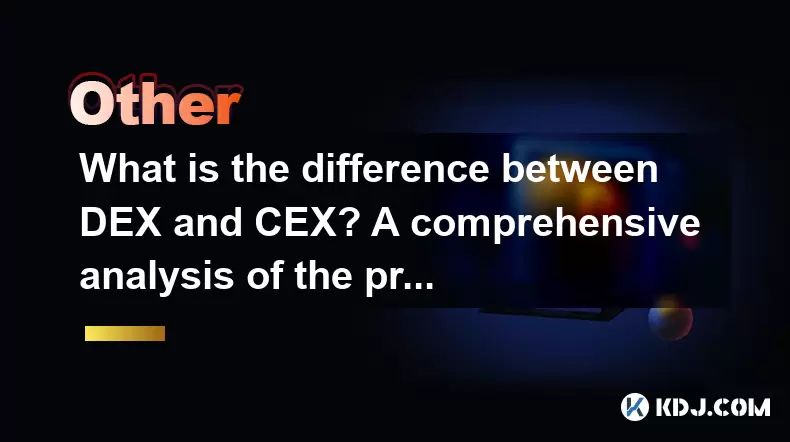-
 Bitcoin
Bitcoin $117,991.5647
-0.03% -
 Ethereum
Ethereum $2,966.4808
0.18% -
 XRP
XRP $2.8076
0.64% -
 Tether USDt
Tether USDt $1.0003
0.00% -
 BNB
BNB $689.9050
-0.63% -
 Solana
Solana $162.0407
-0.80% -
 USDC
USDC $0.9999
0.00% -
 Dogecoin
Dogecoin $0.1995
-1.51% -
 TRON
TRON $0.3001
-1.21% -
 Cardano
Cardano $0.7426
3.25% -
 Hyperliquid
Hyperliquid $47.7978
2.84% -
 Stellar
Stellar $0.4411
16.52% -
 Sui
Sui $3.4267
0.15% -
 Chainlink
Chainlink $15.3148
0.07% -
 Bitcoin Cash
Bitcoin Cash $506.5880
-1.91% -
 Hedera
Hedera $0.2222
12.41% -
 Avalanche
Avalanche $21.2049
1.67% -
 UNUS SED LEO
UNUS SED LEO $9.0606
-0.19% -
 Shiba Inu
Shiba Inu $0.0...01325
-0.86% -
 Toncoin
Toncoin $2.9979
0.32% -
 Litecoin
Litecoin $94.3717
1.13% -
 Polkadot
Polkadot $3.9873
-0.29% -
 Monero
Monero $336.1497
0.92% -
 Dai
Dai $0.9999
-0.01% -
 Uniswap
Uniswap $8.5189
-0.60% -
 Ethena USDe
Ethena USDe $1.0005
-0.04% -
 Pepe
Pepe $0.0...01236
-0.92% -
 Bitget Token
Bitget Token $4.4002
-0.23% -
 Aave
Aave $303.5433
1.05% -
 Bittensor
Bittensor $391.1314
-0.35%
What is the "Merkle tree" in blockchain? How does it ensure data integrity?
Merkle trees efficiently verify blockchain data integrity using cryptographic hashing. A Merkle root acts as a dataset's fingerprint, enabling faster verification than checking individual transactions, crucial for lightweight clients and scalability.
Mar 12, 2025 at 12:20 pm

Key Points:
- Merkle trees are hierarchical data structures used in blockchains to efficiently verify data integrity.
- They employ cryptographic hashing to create a compact representation of a large dataset.
- Merkle roots act as a single, verifiable fingerprint of the entire dataset.
- Verification is significantly faster and more efficient than checking every single transaction.
- Merkle trees are crucial for lightweight clients and efficient blockchain operation.
What is a Merkle Tree in Blockchain?
A Merkle tree, also known as a hash tree, is a fundamental data structure used in blockchain technology to ensure the integrity of large datasets, such as the collection of transactions within a block. It's a binary tree where each leaf node represents the cryptographic hash of a single piece of data (e.g., a transaction). Parent nodes are calculated by hashing the concatenation of their child nodes' hashes. This process continues recursively until a single hash at the top is generated – the Merkle root.
How Does a Merkle Tree Ensure Data Integrity?
The power of a Merkle tree lies in its ability to efficiently verify data integrity. Any alteration to a single piece of data (a transaction, for instance) will propagate changes up the tree, resulting in a different Merkle root. This makes it easy to detect tampering. A blockchain node only needs to compare the Merkle root provided with the block's header against the Merkle root it independently calculates from the block's transactions. A mismatch indicates data corruption or manipulation.
Creating a Merkle Tree: A Step-by-Step Guide
Let's illustrate with a simplified example of four transactions (T1, T2, T3, T4).
- Step 1: Hashing Individual Transactions: Each transaction is individually hashed using a cryptographic hash function (like SHA-256) producing four hash values (H1, H2, H3, H4).
- Step 2: Pairing and Hashing: The hash values are paired (H1 with H2, H3 with H4). The concatenation of each pair is then hashed, resulting in two new hashes (H5, H6).
- Step 3: Recursive Hashing: The process repeats. H5 and H6 are paired, concatenated, and hashed, producing a single hash (H7). H7 is the Merkle root.
This Merkle root acts as a digital fingerprint for the entire set of transactions. Any change to a single transaction will cascade through the tree, altering the final Merkle root.
Merkle Trees and Lightweight Clients
One of the key advantages of Merkle trees is their efficiency. Lightweight clients, with limited storage capacity, don't need to download and store the entire blockchain. Instead, they can download only the Merkle root and the specific transaction hashes they are interested in. They can then verify the integrity of their selected transactions by requesting the relevant branches of the Merkle tree from a full node. This dramatically reduces the storage and bandwidth requirements for lightweight clients.
Merkle Proofs and Verification
To verify a specific transaction, a Merkle proof is used. This is a compact path from the transaction's leaf node to the Merkle root. It contains the hashes of the siblings of each node along the path. A client can use this proof to reconstruct the Merkle root and verify the transaction's inclusion in the block without needing the entire dataset. This process significantly reduces the data required for verification.
Merkle Trees and Blockchain Security
The use of Merkle trees contributes significantly to the security and integrity of blockchain systems. The cryptographic hashing ensures that even a minor alteration will be immediately detectable. The Merkle root acts as a concise and reliable summary of the entire dataset, making it a vital component of blockchain technology. It is a fundamental component of the consensus mechanisms employed by many blockchains, ensuring trust and transparency.
Merkle Trees and Scalability
The efficiency of Merkle trees also contributes to blockchain scalability. The compact nature of Merkle proofs allows for faster verification of transactions, particularly beneficial in high-throughput blockchain networks. This efficient verification mechanism is essential for handling the large volume of transactions expected in a widely adopted blockchain system.
Frequently Asked Questions
Q: What is the difference between a Merkle tree and a hash chain?
A: A hash chain is a linear structure where each hash depends only on the previous one. A Merkle tree is a tree structure, allowing for more efficient verification of subsets of data. A Merkle tree offers better efficiency for verifying individual transactions within a block.
Q: Can Merkle trees be used outside of blockchain technology?
A: Yes, Merkle trees find applications in various fields requiring data integrity verification, including version control systems (like Git) and distributed databases. Their ability to efficiently verify large datasets makes them a versatile tool in various applications beyond blockchain.
Q: What happens if a hash function used in a Merkle tree is compromised?
A: A compromised hash function would undermine the security of the Merkle tree. A new, cryptographically secure hash function would need to be adopted to restore the integrity of the system. The entire structure would need to be recalculated using the new function.
Q: How do Merkle trees handle large numbers of transactions?
A: Even with a vast number of transactions, the Merkle tree remains efficient. The logarithmic nature of the tree structure ensures that the verification process scales well, even with a massive dataset. The height of the tree grows logarithmically with the number of transactions.
Q: Are Merkle trees susceptible to denial-of-service attacks?
A: While Merkle trees themselves are not directly susceptible to denial-of-service attacks, the underlying network infrastructure could be targeted. Appropriate network security measures are essential to protect against such attacks. The efficiency of Merkle trees does not inherently protect against network-level issues.
Disclaimer:info@kdj.com
The information provided is not trading advice. kdj.com does not assume any responsibility for any investments made based on the information provided in this article. Cryptocurrencies are highly volatile and it is highly recommended that you invest with caution after thorough research!
If you believe that the content used on this website infringes your copyright, please contact us immediately (info@kdj.com) and we will delete it promptly.
- HYPE Token & Hyperliquid: Riding the DeFi Wave with Open Interest
- 2025-07-13 16:30:16
- Unilabs Finance Takes Center Stage: Leaving Pepecoin and Floki Inu in the Dust?
- 2025-07-13 16:30:16
- XRP, SEC Appeal, Bitcoin & Ethereum: A Crypto Crossroads
- 2025-07-13 14:50:12
- Bitcoin Hypergrowth: Riding the Crypto Price Wave Like a Pro
- 2025-07-13 14:30:11
- Meme Coins, Arctic Pablo, and ROI: Riding the Crypto Wave
- 2025-07-13 14:30:11
- Pump.fun, Memecoins, and Funding Frenzy: What's the Deal?
- 2025-07-13 14:50:12
Related knowledge

What is an oracle in blockchain? Detailed explanation of its role
Jun 21,2025 at 06:14am
Understanding the Concept of an Oracle in BlockchainIn the realm of blockchain technology, an oracle is a trusted third-party service that connects sm...

Does token destruction affect prices? Case study
Jun 22,2025 at 02:50am
Understanding Token DestructionToken destruction, commonly referred to as token burning, is a process where a portion of cryptocurrency tokens is perm...

What is a blockchain node? Popular science on the operating principle
Jun 22,2025 at 11:00pm
Understanding the Basics of a Blockchain NodeA blockchain node is essentially a computer connected to a blockchain network that participates in valida...

What is the difference between DEX and CEX? A comprehensive analysis of the pros and cons
Jun 24,2025 at 09:42am
What is a DEX (Decentralized Exchange)?A DEX, or Decentralized Exchange, operates without a central authority. Unlike traditional platforms, DEXs allo...

What is zero-knowledge proof? Key privacy protection technology
Jun 22,2025 at 07:29pm
Understanding Zero-Knowledge ProofZero-knowledge proof (ZKP) is a cryptographic method that allows one party to prove to another party that they know ...

What can a blockchain browser check? A practical function guide
Jun 20,2025 at 07:35pm
Understanding the Role of a Blockchain BrowserA blockchain browser serves as a powerful tool for anyone interacting with blockchain networks. It allow...

What is an oracle in blockchain? Detailed explanation of its role
Jun 21,2025 at 06:14am
Understanding the Concept of an Oracle in BlockchainIn the realm of blockchain technology, an oracle is a trusted third-party service that connects sm...

Does token destruction affect prices? Case study
Jun 22,2025 at 02:50am
Understanding Token DestructionToken destruction, commonly referred to as token burning, is a process where a portion of cryptocurrency tokens is perm...

What is a blockchain node? Popular science on the operating principle
Jun 22,2025 at 11:00pm
Understanding the Basics of a Blockchain NodeA blockchain node is essentially a computer connected to a blockchain network that participates in valida...

What is the difference between DEX and CEX? A comprehensive analysis of the pros and cons
Jun 24,2025 at 09:42am
What is a DEX (Decentralized Exchange)?A DEX, or Decentralized Exchange, operates without a central authority. Unlike traditional platforms, DEXs allo...

What is zero-knowledge proof? Key privacy protection technology
Jun 22,2025 at 07:29pm
Understanding Zero-Knowledge ProofZero-knowledge proof (ZKP) is a cryptographic method that allows one party to prove to another party that they know ...

What can a blockchain browser check? A practical function guide
Jun 20,2025 at 07:35pm
Understanding the Role of a Blockchain BrowserA blockchain browser serves as a powerful tool for anyone interacting with blockchain networks. It allow...
See all articles

























































































